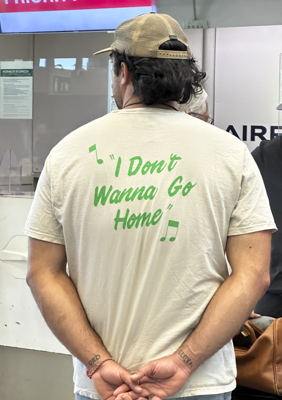September 15 – October 1, 2023
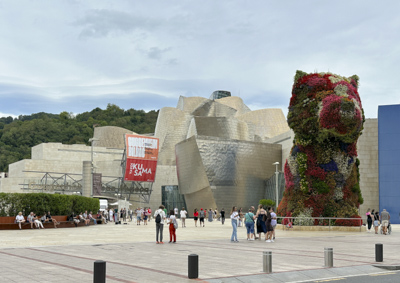
As Hurricane Lee barreled northward along the Atlantic coast, we packed for a trip to Spain. The storm hovered a few hundred miles off the tip of Long Island, as we drove to JFK. The plane left a little late and the pilot announced it would be a “bumpy ride” due to turbulence. After a short stop-over in Paris, we arrived in Bilbao Spain at noon on Saturday, Sept. 16.
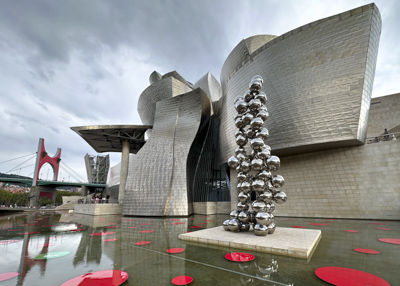
We were in Bilbao for a long weekend to adjust to European time and explore the city before boarding a cruise ship to go around the Iberian peninsula. We stayed at the Gran Hotel Domine, located across the street from the fabulous Guggenheim Bilbao Museum designed by Frank Gehry.

Bilboa is a wonderful city. Important sights are within walking distance and public transportation is modern, convenient, and cheap. On Sunday, we walked to Casco Viejo – old town – along the main shopping street, the Gran via don Diego Lopez de Haro.
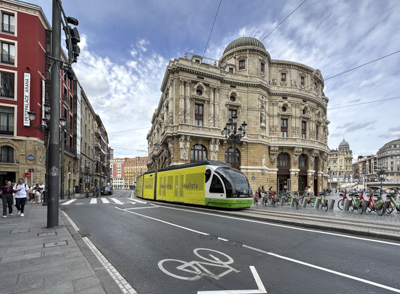
El Casco Viejo was the cleanest and nicest Old Town we ever visited. Plaça Nueva was lined with inviting tavernas selling a variety of pintxos.
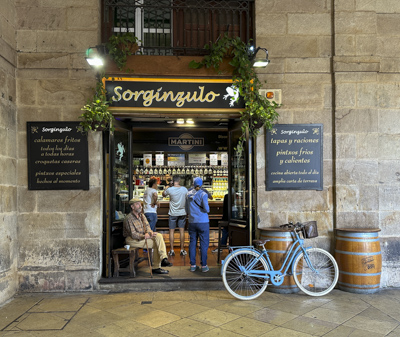
Pintxos (“pin-chos”) are tasty snacks served in tavernas throughout the Basque region of Spain. They usually include a variety of ingredients held in place with a toothpick on a piece of rustic bread.
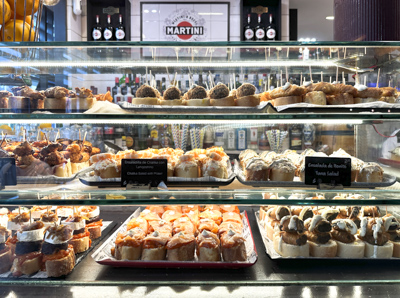
The streets were empty of people and cars, so it was a pleasure to walk around. We stopped by the famous Mercado Ribera which is supposed to be the biggest indoor market in Europe.

The impressive 14th century Catedral de Santiago de Bilbao was built among the narrow streets of el Casco Viejo.
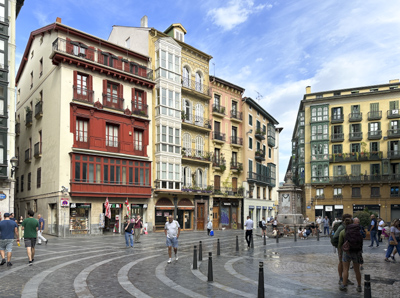
On Monday, we went to the Artxando funicular station and rode up to the highest point in Bilbao for the view. The funicular was decorated in large polka-dots to coincide with the Kusama exhibit at the Guggenheim Museum.
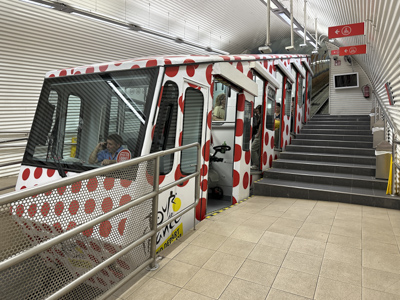
Bilbao straddles the Nervión River and is surrounded by beautiful green hills.

We really liked Bilbao. It’s a wonderful walkable city with many cultural sights, excellent restaurants, friendly people, good public transportation, and delicious pintxos!

Tuesday September 19: We checked out of the hotel and took a taxi to the commercial cruise port in the city of Getxo (“Get-sho”) about 30 minutes from Bilbao. We were booked on the Norwegian Gem for a 12-day cruise around the Iberian Peninsula.
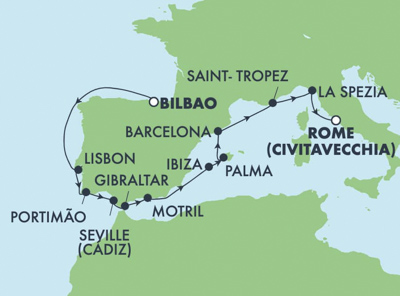
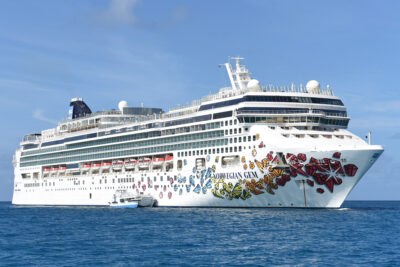
We arrived about noon, checked in at the dock, and boarded the ship. We had lunch outdoors on the aft deck and had plenty of time to explore the Gem. We settled into our stateroom and met our steward, Chandra.
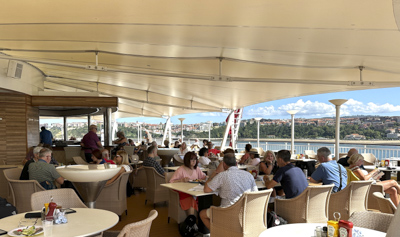
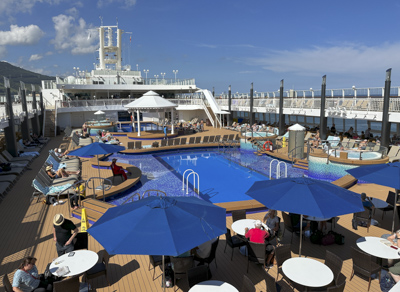
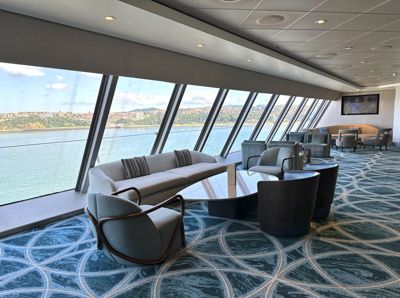
In the evening, the ship left the protected harbor of Getxo and entered the rough open waters the Atlantic Ocean. A coastal storm was brewing and it was windy and rainy all night. The Gem pitched and rolled with the wind and waves.
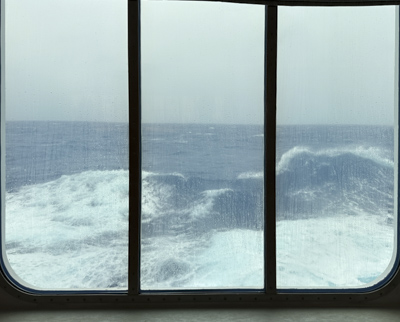
Our next day out was a “Sea Day” as the ship cruised south to Lisbon. The crew set up “barf bags” in public areas. Luckily, Jeff and I were okay and we enjoyed empty dining rooms for dinner and breakfast.
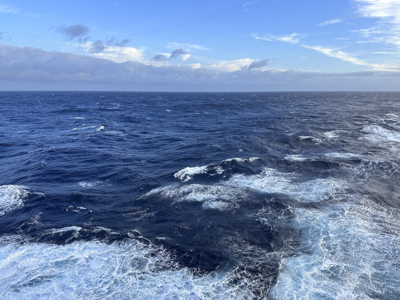
Thursday, September 21: Lisbon Portugal – The Atlantic storm subsided and the winds were calm as we approached Lisbon. The city was built on the hills above the Tagus River where it meets the Atlantic Ocean and the view of Lisbon is impressive.
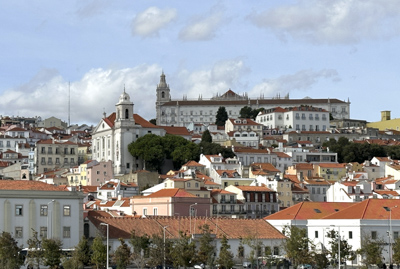
We disembarked and walked along the waterfront to the magnificent Plaça do Comércio which is lined with cheerful yellow 18th century buildings.

The Arco Triunfal da Rua Augusta leads to the center of the Baixa neighborhood, the main shopping area. I loved the elaborate black and white patterns and variety of the cobblestone designs on pedestrian pathways. (They reminded me of Rio de Janiero)
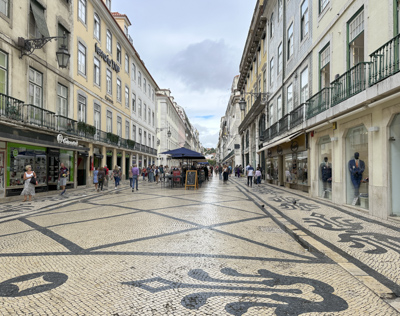
Inspired by Roman mosaics, Portuguese cobblestones are one of the symbols of Lisbon. They were first created in 1498, and today the Mestres Calceteiros, (cobblestone masters) are known worldwide.

The city of Lisbon is very hilly and one solution to climbing the steep hills was the Elevator de Santa Justa. It was opened in 1899 to transport people from the Baixa up to the Barrio Alto district. We didn’t take the elevator because the line of tourists was very very long and we didn’t want to spend time waiting.

Pasteis de Nata is the iconic Lisbon pastry. The secret recipe of the creamy custard tart dates back to the 16th century when they were made by nuns in local convents. The Pasteis de Nata that we sampled were delicious: creamy and not too sweet. Really good with coffee!
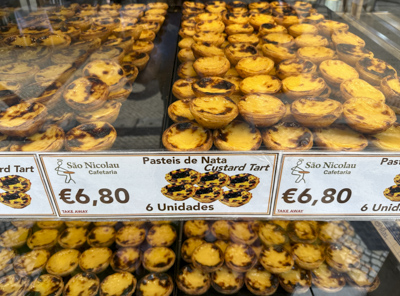
Since we had only a few hours in the city, we decided to take a Hop-on-Hop-Off bus in order to see as much as possible in a short amount of time. We passed by the 16th century Jerónimos Monastery in the Belem neighborhood.
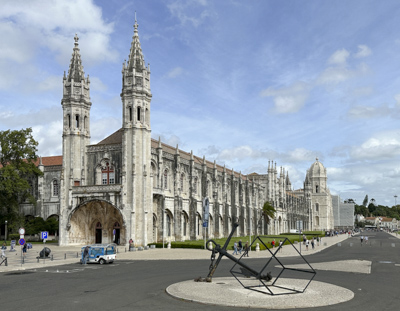
We also drove by the Padrao dos Descobrimentos (Monument to the Discoveries) which was originally built in 1940 and reconstructed in 1960 to commemorate the 500th anniversary of the death of Henry the Navigator and to honor Portuguese explorers.

The 11th century Moorish Castelo de São Jorge crowns the top of the hill of the Alfama district. This is the oldest neighborhood in Lisbon with “cobbled lanes and alleys and steep grueling inclines.” The Alfama is also where Fado music originated.

We took a taxi half way up the Alfama hill to the Miradouro de Santa Luzia which is a beautiful scenic overlook with fabulous views of Lisbon and the Tagus River.
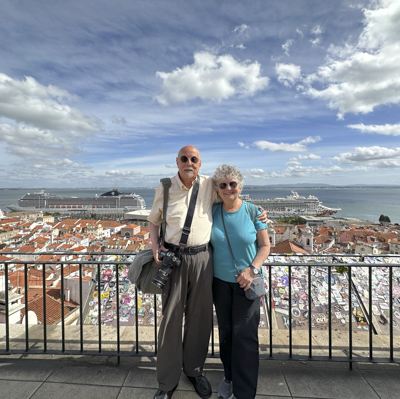
No trip to Lisbon would be complete without mention of the famous historic #28 Tram:
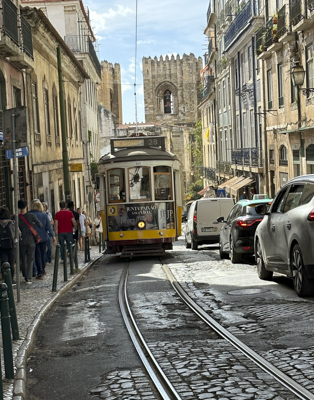

Friday September 22 – Portimao Portugal We were awakened by the grating voice of the cruise director at 7:15AM. She announced our early arrival at our next port-of-call: Portimao.

Since we didn’t have any specific plans, we had a leisurely breakfast on the aft deck before exploring. Portimao was billed as a gateway to the famous Algarve region of Portugal, but the town looked seedy and rundown.
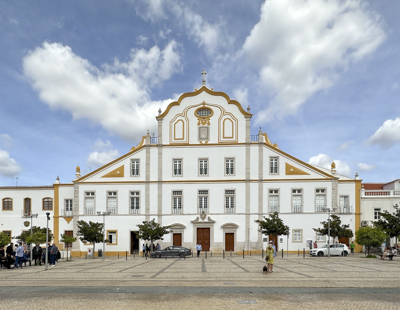
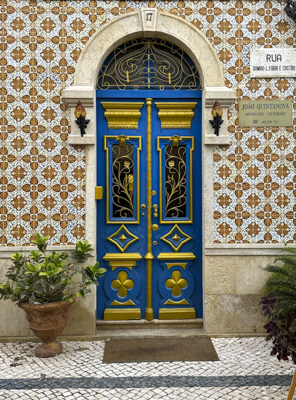
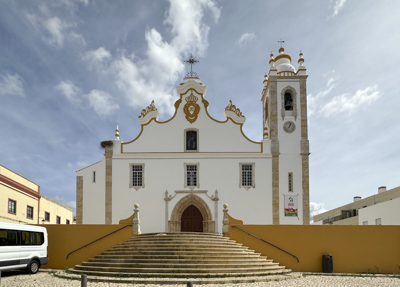
It was interesting to see huge White Stork’s nests on all the highest structures along the harbor. The birds are white with black wingtips and bright orange beaks and legs. They are about three feet tall with wingspans of six feet.
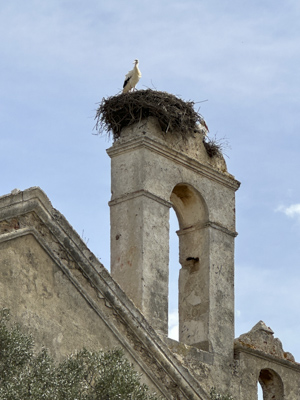
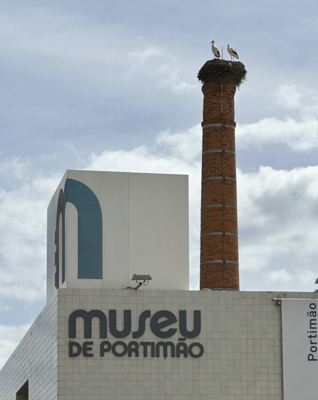
Saturday September 23 – Cádiz Spain It was a beautiful warm sunny day to explore the ancient port city of Cádiz in the Andalucia region of southern Spain.
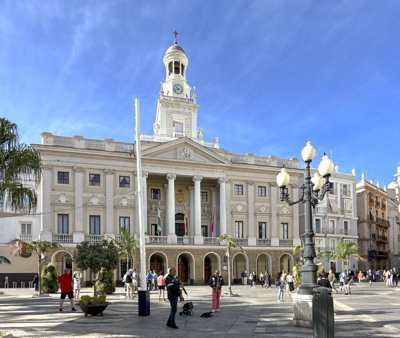
Located on a narrow strip of land, Cádiz is one of the oldest continuously inhabited cities in Western Europe. It was founded by the Phoenicians before the 7th century BC.
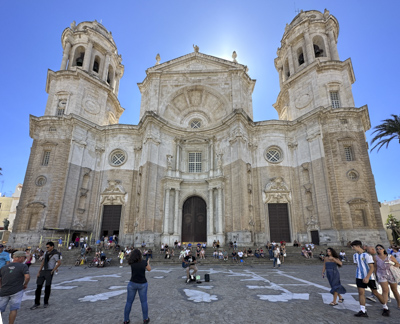
The city seemed alive with many people and there was a festive atmosphere everywhere. The plazas were lined with cafés full of families enjoying a sunny Saturday. In the photo above, people sat on the cathedral steps to listen to an impromptu street musician play lively Spanish tunes.
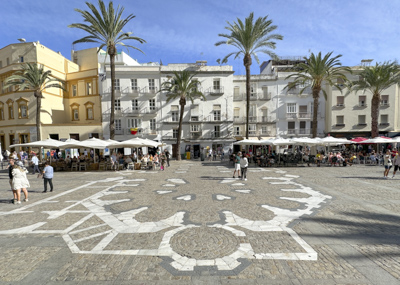
The Central Market of Cádiz is supposedly the oldest covered market in Spain. The interior has Doric columns on all four sides, making it look like a Roman temple, although it was originally built in 1838.
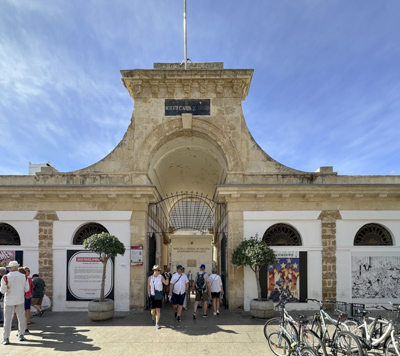

There were many local people shopping at the market which was well stocked with local vegetables, fruits, Spanish cheeses, fresh fish and seafood, and bread.
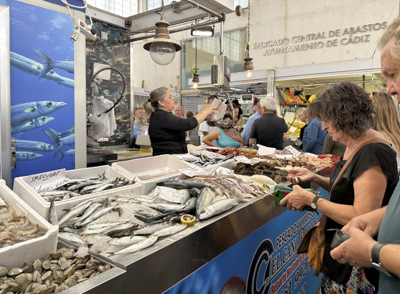
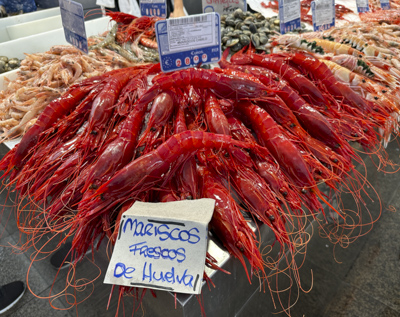
Cádiz was built on a long narrow peninsula surrounded by water, so it’s hard to get lost. The main narrow streets of the Old Town led to a lovely beach at the end of Cádiz.
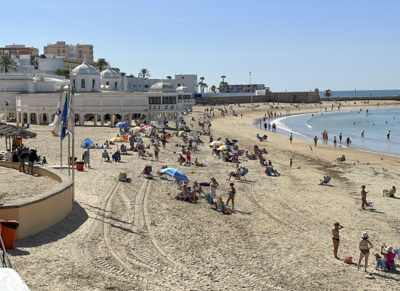
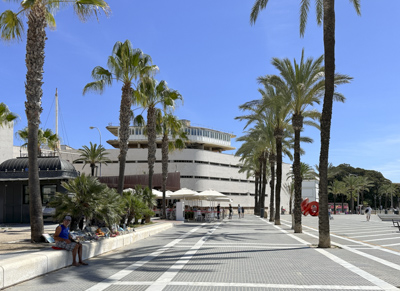
We enjoyed a light lunch of smoked sardines over guacamole and an Andalusian soup called Salmorejo, also with sardines. Quilla Restaurante is located on a wide boulevard overlooking the beach.
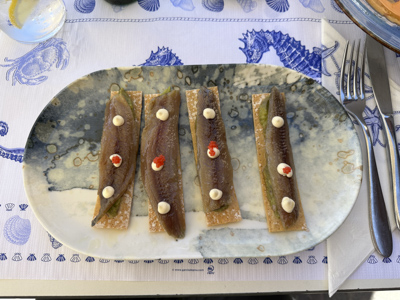
This part of Cádiz is also home to the University of Cádiz, as well as several beautiful botanical gardens and parks.
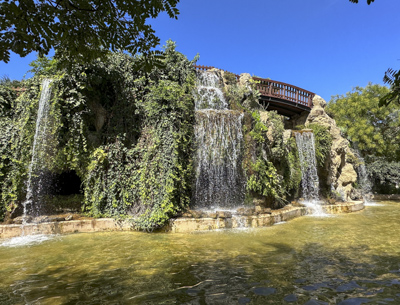
The Gran Teatro Falla was completed in 1905 and named for the Andalusian Spanish composer, Manuel de Falla, who is considered to be Spain’s greatest composer of the 20th century.

A Roman theater was discovered in 1980 under several old warehouses which were destroyed by fire. The theater was constructed in the 1st century BC and is the second largest Roman theater in the world.
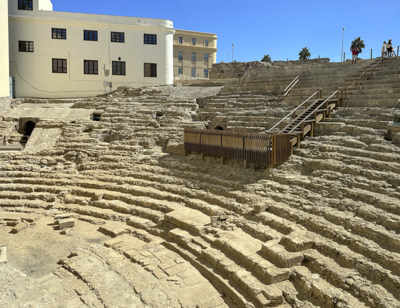
Sunday September 25 – Gibraltar: I was looking forward to visiting Gibraltar because I didn’t know what to expect and I thought I would never see the famous “Rock.” Gibraltar is a peninsula which is attached to Spain, however it is a British Overseas Territory.

We were awakened before dawn by the loud sound of the engines of an oil tanker right outside our balcony. The Hercules 8000 was moving sideways very slowly toward the starboard side of our ship. As it moved closer, I finally figured out that it was going to re-fuel the Norwegian Gem.
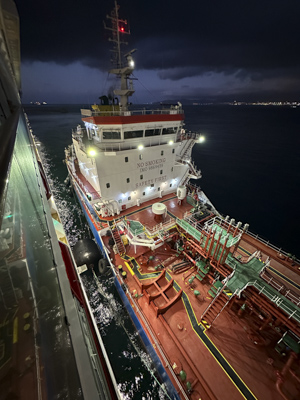
Gibraltar is essentially a small city at the foot of a huge mountain, known as The Rock of Gibraltar and popularized by the American insurance company, Prudential. The airport, on the left side of the map below, is the border between Spain and the British Territory.
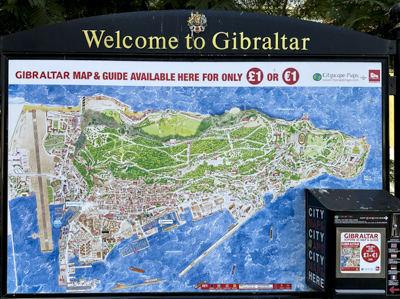
We took a taxi from the ship to Grand Casemates Square, which was a short walk to Main Street which leads directly to the Cablecar Station to get up to the Top of the Rock.

Main Street is the primary pedestrian shopping street lined with stores and restaurants but, luckily for us, most of the shops were closed because it was Sunday.

We waited in line for almost an hour to board the cable car to go 1,398 feet to the top. It was a fun ride with gorgeous views of the surrounding seas.
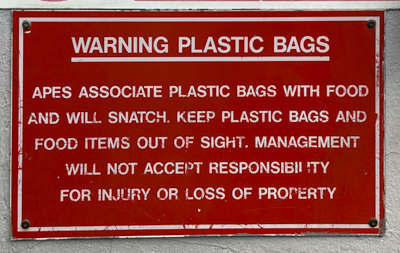
There were warnings everywhere about the Barbary macaques that live on the upper rock. They are about the size of a small child and kinda cute. The “apes” watch the tourists and look for food to snatch.
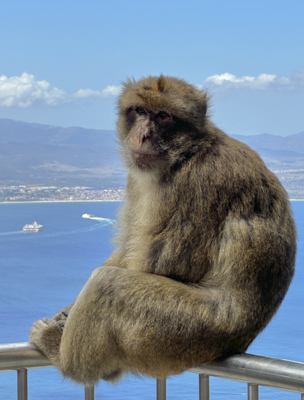
The view from the top is spectacular, especially on a bright sunny day. After we explored and took lots of monkey pictures, we sat by a windowed café to have smoothies and enjoyed the view.
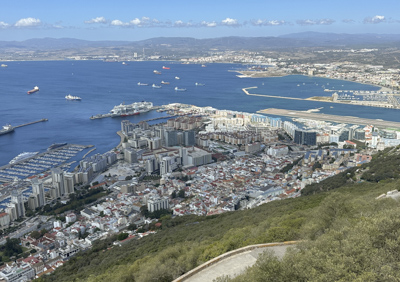
We opted not to walk down from the top, so we missed the caves and other tourist sights along the way. We rode the cable car back down to Main Street.

When we returned to the ship, the Hercules 8000 had finished refueling the Gem, untied the lines, and was slowly moving away. I guess when you’re a huge cruise ship, the gas station comes to you!
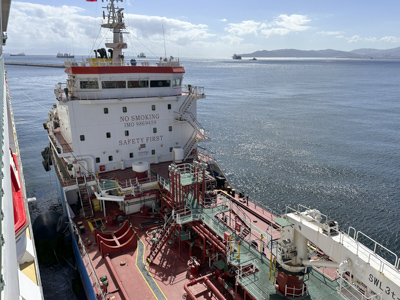
Monday, September 25: Motril – Granada, Spain: Motril is a port city on the Mediterranean Sea located about 40 miles from Granada. We had pre-arranged an excursion bus take us to visit Granada on our own. Since we had limited time, we decided not to visit Alhambra on this trip.
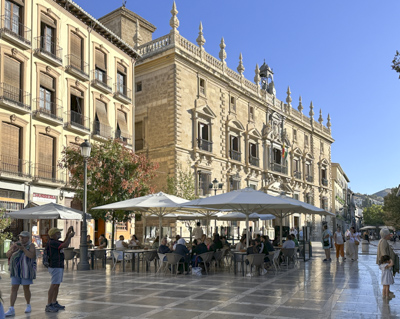
Granada is an ancient city located in the foothills of the Sierra Nevada Mountains in the Andalusia region of Spain. After the bus drove through hilly farmland, I was surprised by all the modern buildings, apartments, and international chain stores in and around the city.
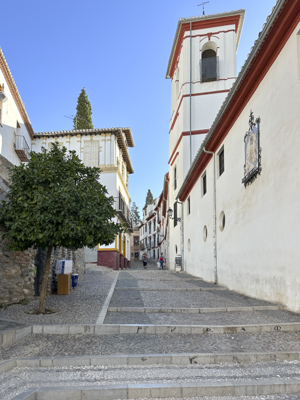
The bus left us off near the cathedral and we used the GPS on our phones to find our way around. Our goal was to explore the historic El Albaicín district of Granada.

Built on a steep hill, the Moorish district has retained its medieval street plan from the 13th to 15th centuries. It was declared a UNESCO World Heritage Site.
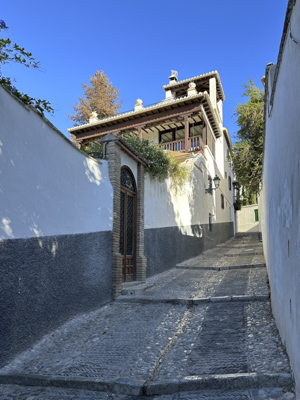
We climbed up steps and followed steep cobblestone alleyways to the top of the Albaicín hill to the Mirador de San Nicolas. The plaza of St. Nicolas church has a beautiful overlook with stunning views of the city of Granada and Alhambra palace across the valley.
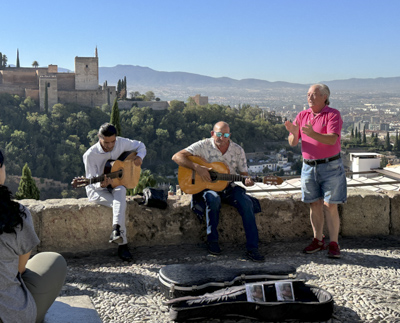
A pair of Spanish guitarists were playing tunes for the tourists in the plaza. They were excellent musicians and the popular songs were appreciated by Spanish tourists who clapped and sang along.
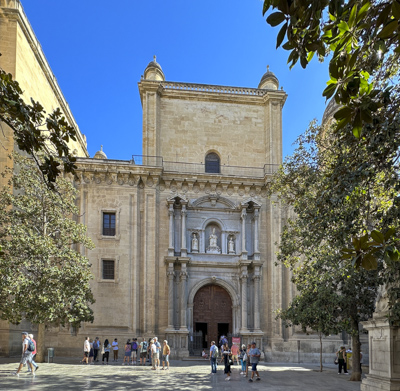
We took a taxi back down the hill to the 16th century cathedral which was built on top of the city’s main mosque in the old Muslim Medina. Next to the cathedral is the Alcaicería or Arab Market.
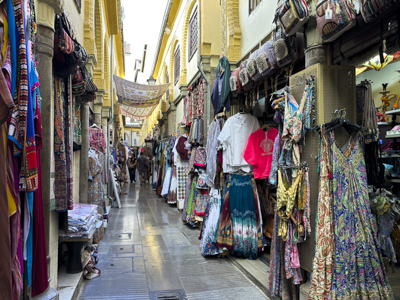
The Alcaicería opened in the 15th century but was destroyed by fire in the 19th century and then completely rebuilt. Today, it is filled with many small shops selling tourist souvenirs.

I wanted to see the Hammam Al Ándalus or traditional Arab baths so we followed the narrow street that runs along the Darro River.
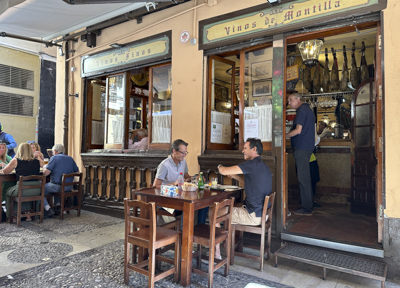
Later, we decided to stop for lunch at an interesting restaurant called Bodegas Castañeda and shared a table with a couple from The Netherlands who drove to Granada for the weekend.

We ordered a Tabla Castañeda Fría so Jeff and I shared a delicious assortment Spanish meats and cheeses. The bus back to Motril drove through the beautiful countryside of southern Spain.
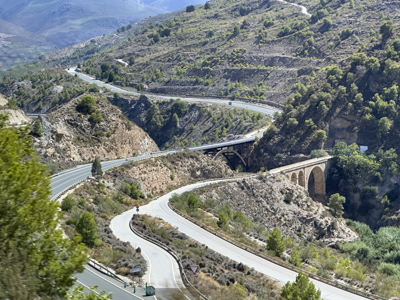
Tuesday September 26: Ibiza, Spain: The ship arrived in Ibiza Town at 10am, so we had time for breakfast outdoors on the aft deck. The weather was perfect: low 70s with a soft breeze off the sea.

The fortified Dalt Vila (upper town) and the Catedral de Nuestra Señora de las Nieves are perched on a small mountain overlooking the harbor of Ibiza Town. Most people walk up the mountain from Ibiza Town, but we took a taxi from the ship up to the top of the fortifications and walked down.
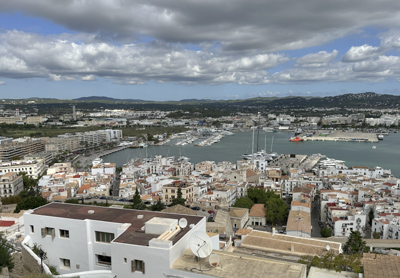
The 360 degree view of the harbor and the Mediterranean Sea was spectacular. The old town was built on the side of the mountain below the fortifications. The newer city of Ibiza Town is at sea level and runs along the U-shaped harbor.
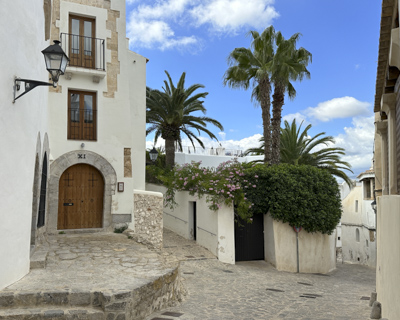
The island of Ibiza is famous for its nightlife and has a reputation as the “Party Capital of the World.” We visited during the day, so the island was very quiet. We saw posters outside a few clubs which were selling tickets to music venues and showing prices and availability.
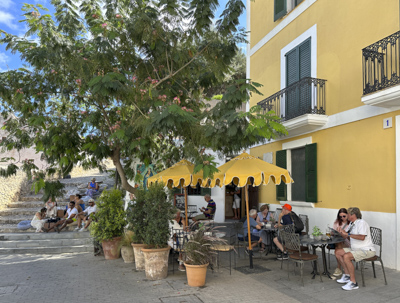
We stopped for lunch at a restaurant called Cevitxef for ceviche – marinated fresh fish. The restaurant had tables in the shade of the flowering trees in the photo below:
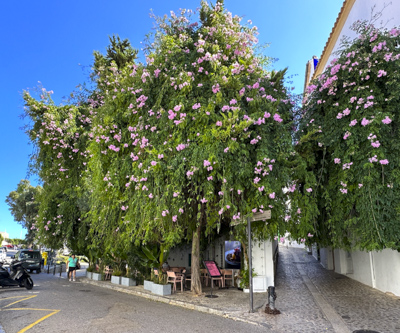
The ceviche was very fresh and delicious.
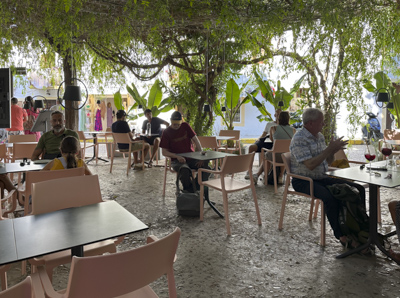
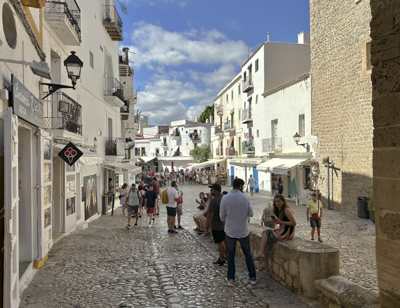
Ibiza is the third largest of the Balearic islands, after Majorca and Menorca. The Phoenicians settled in Ibiza in 654BC. It’s a beautiful island and the town is wonderful fun.
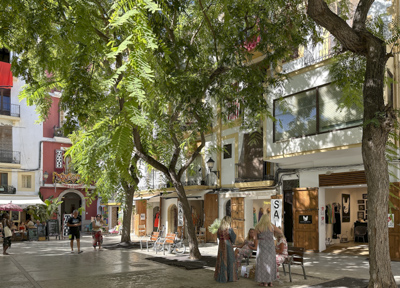
The Renaissance walls in the old town were awarded UNESCO World Heritage status in 1999.
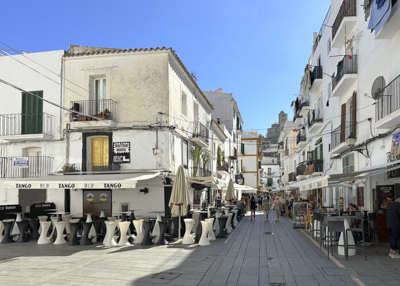
Ibiza Town has modern buildings, many stores, restaurants, and traffic on its narrow back streets.
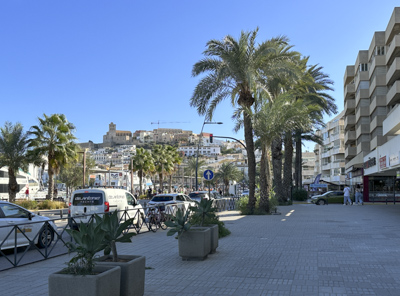
The ship left Ibiza harbor after dark, so I took a photo of Dalt Vila lighted at night:

Wednesday September 27: Palma, Mallorca Spain We visited Palma last year and wanted to see a different part of the beautiful island of Mallorca, so we took a train to the town of Sóller.
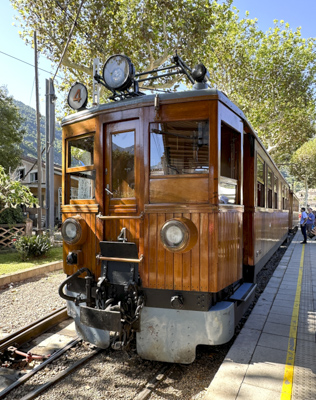
Called the Ferrocarril de Sóller, the wooden trains were built in 1912 and lovingly restored to their original lacquered beauty. The train station is located in downtown Palma.
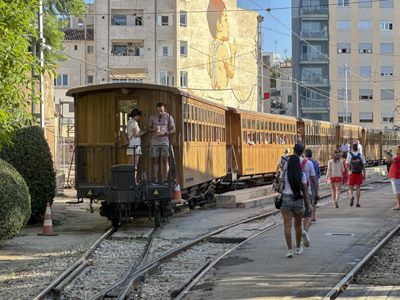
The hour-long journey takes passengers through the agricultural and mountainous interior of the island.
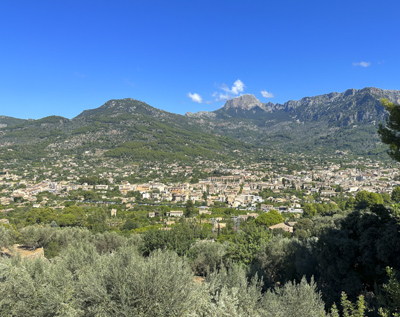
The city of Sóller boasts of growing the best oranges in the world. The train stopped in the city-center near the town square. Some passengers took a tram to the Port of Sóller, a short distance away.
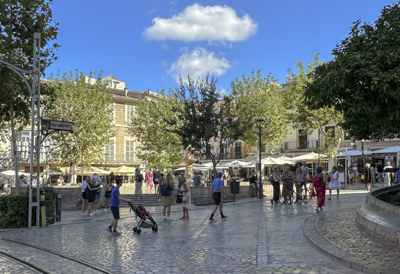
The church of Sant Bartomeu and the town hall overlook the Plaça Constitució which is surrounded by cafés and restaurants. We walked up a festive-looking street full of interesting shops:

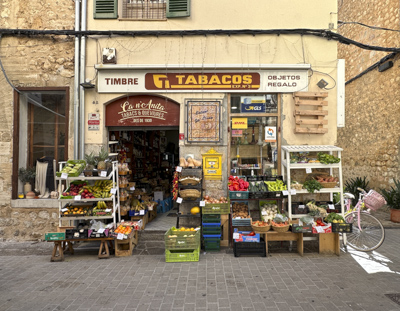
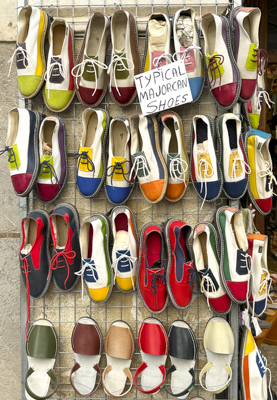
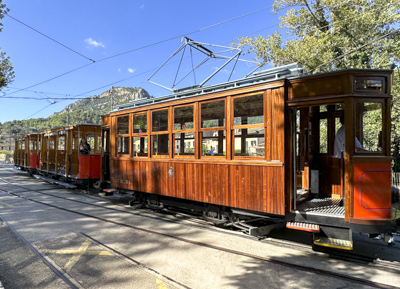

We returned to Palma, the capital city of Mallorca, sometimes spelled Majorca.
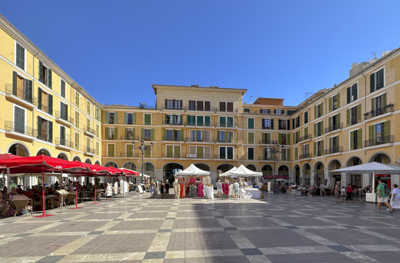
There were many tourists in Mallorca enjoying the shops, cafés, and public squares.

The Royal Palace of la Almudaina and the Catedral-Basílica de Santa María de Mallorca:

We found a taxi to take us back to the ship.

Thursday September 28 Barcelona, Spain: It was wonderful to be back in Barcelona again – fabulous city – one of my favorite cities in the world.

Since we had only a few hours to spend, we wanted to see something new, so we took a taxi up Montjuïc hill to El Poblé Espanyol. This is an open-air architectural museum and crafts center.

The medieval gate is the entrance to the “Spanish Town.” El Poblé Espanyol was built in 1929 to highlight regional architecture. The museum consists of 117 full-scale buildings reproduced from different regions of Spain.

The buildings showcased the wide variety of architectural styles and regional culture across the country.
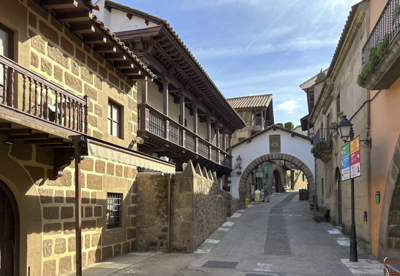
On the ground level shops were installed to provide workspace for artisans to demonstrate their skills and to help provide them with an income by selling their products.

Among the professional artisans were: basket making, handmade jewelry, engraving and printmaking, sculpture, dressmaking, leather, stained glass, paper-mache sculptor, weaving, embroidery, and a lutherie – or guitar making workshop.
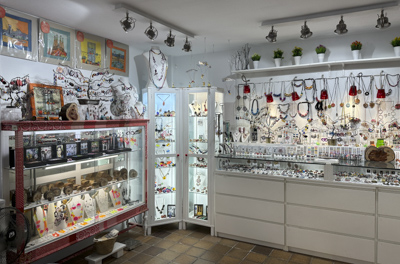


In the photo above is a beautiful brick tower from the central Aragón region of Spain.
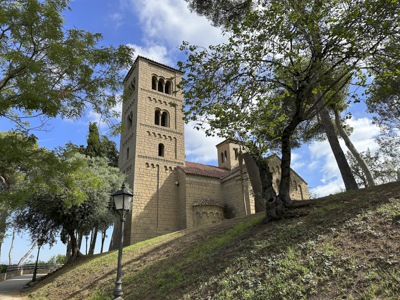
Overlooking Barcelona, was the Romanesque Monastery of Sant Miguel with a bell tower and lovely cloister representing the architecture of Catalunya and the Mediterranean region of Spain.
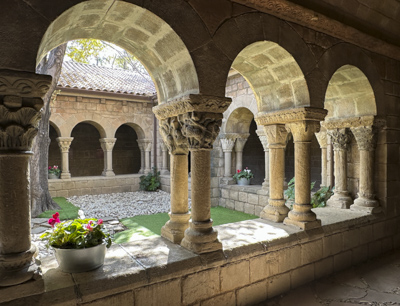
Colorful umbrellas lined the main entrance to Poblé Espanyol:
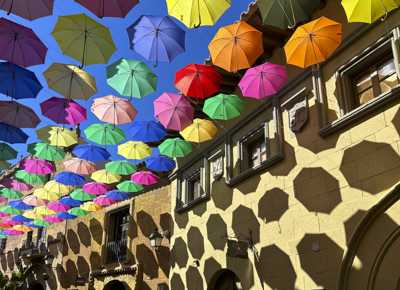
The ship left Barcelona relatively early to cruise across the magnificent Mediterranean Sea and arrive in the French city of Saint-Tropez.
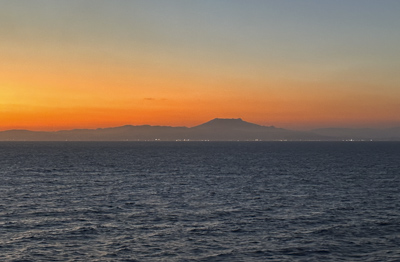
Friday September 29 – Saint-Tropez, France: The Norwegian Gem arrived in the Gulf of St-Tropez and dropped anchor in the gorgeous blue water of the Mediterranean. We rode in a tender into town.

Saint-Tropez is a coastal town on the French Riviera that became famous due to Brigitte Bardot movies and the international “jet set” of the 1960s.
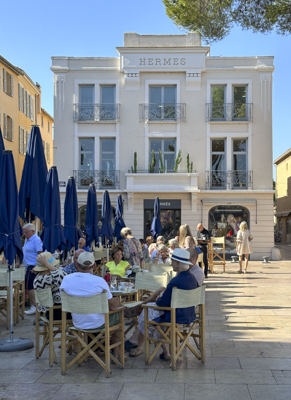
Today, the port has more luxury yachts than fishing boats and the Vieux Port (Old Town) is full of international designer boutiques and haute couture shops.

By chance, we arrived on the first day of their annual Les Voiles de Saint-Tropez – a sailing regatta for Maxi, Modern, and Classic yachts from around the world. They expected 250 yachts this year.
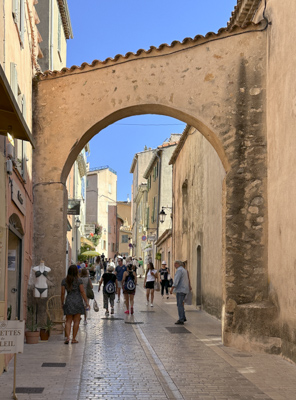

After we walked around the town for a couple of hours, we took the tender back to the ship. We found comfortable chairs on deck and watched the regatta yachts sail around offshore.
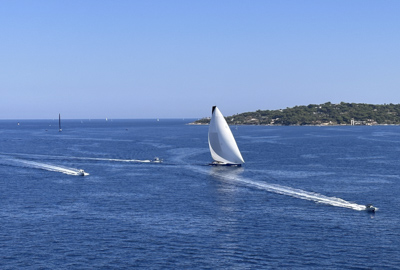

Saturday September 30 – La Spezia, Italy: The Norwegian Gem left St. Tropez and traveled south to the commercial port city of La Spezia, Italy. We had signed up for boat trip to take us to see the Cinque Terra villages from the sea.
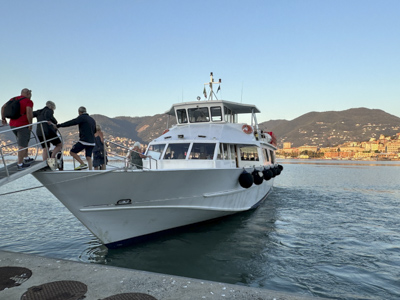
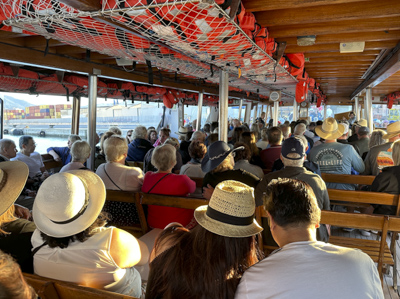
With about 200 other cruise-ship passengers, we motored along the shore to a lovely Italian town called Porto Venere.
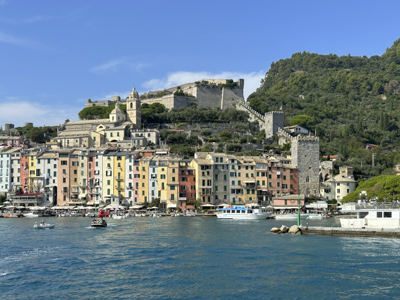
The boat rounded the peninsula on which stands la Chiesa di San Pietro. The church was consecrated in 1198 and restored in 1935.
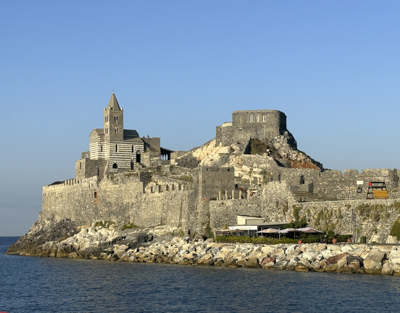
We passed several small towns built on the steep hills along the shore. We could not imagine how the houses had been built on sheer vertical cliffs. The towns looked lovely and the views were incredible.
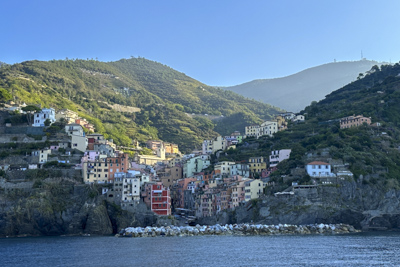
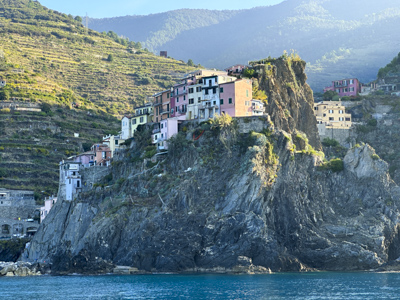
Our tourist boat pulled into the tiny harbor of Vernazza and we went ashore to see the little town.
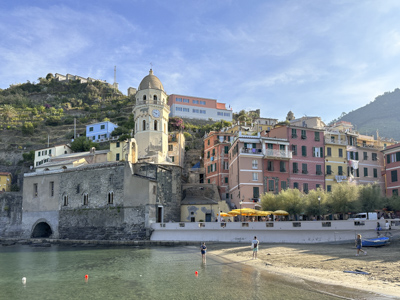
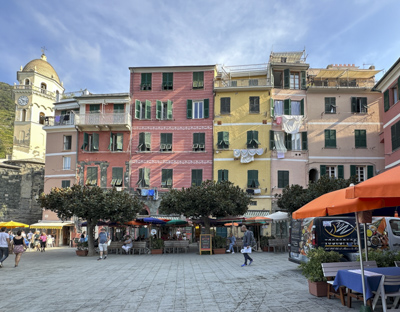
We had always wanted to see the five tiny towns known as Cinque Terre, so we were excited to visit at least one of them. There was just one narrow street leading up hill from the shore, under railroad tracks, and essentially ending at small houses and a vineyard.

Vernazza was incredibly overcrowded with tourists and we could not image what Vernazza and the other Cinque Terre towns must be like during the summer tourist-season.

Sunday October 1 – Port of Civitavecchia: The ship arrived early at the dock in the city of Civitavecchia which is the port for Rome, Italy. Our plan was to fly directly home on the day we arrived.
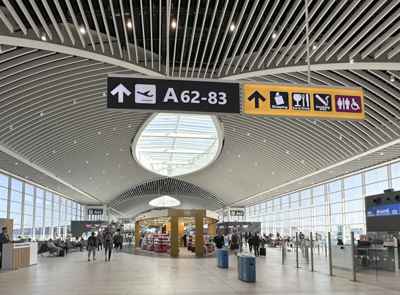
A bus drove us from the ship to Rome’s beautiful modern airport in about an hour. As we were waiting on a security line, I saw the man in the photo below. I thought his shirt expressed my feelings exactly…
